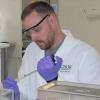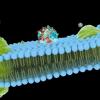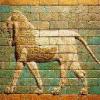Summary
In fall 2014, Longecity supported a crowd-funding initiative to assess the effects of c60oo on cancer using a model of acute myeloid leukemia. Briefly, CIEA NOGs (an immunocompromised mouse model) were administered 1x 10^7 Kg1a cells (a human AML cell line) by tail vein injection, and treated with either saline, olive oil, 2mg/kg c60oo, 4mg/kg c60oo, or 8mg/kg c60oo (n=5 for each group). All cause mortality, liver toxicity (as measured by AST and ALT levels), complete blood counts, and tumor burden (as measured by percent Kg1a in mouse peripheral blood) was evaluated.
Results
Complete blood counts revealed no significant findings. A representative readout is shown:

Liver toxicity was assessed by measuring serum levels of liver enzymes AST and ALT. No significant findings were noted. Representative results are shown:

Finally, all cause mortality was tracked over time. Raw data is shown. The initial death of the first olive oil mouse is attributed to complications associated with Kg1a injection, but has not been adjusted.

Discussion
As measured by median lifespan, c60oo appears to provide a dose-dependent protective effect against all-cause mortality in this model of acute myeloid leukemia. Tumor burden was evaluated by assessing peripheral blood by flow cytometry for the presence of Kg1a. Though effective at observing the presence or absence of Kg1a (preliminary studies showed that we could detect less than 1% Kg1a cells in mouse whole blood), we found that flow cytometric analysis of peripheral blood was an unreliable quantitative marker, and that because Kg1a initially localizes to the bone marrow, it was not detectable in peripheral blood until approximately 30 days post-administration. This suggests that future studies would benefit from the quantification of tumor burden by measuring Kg1a in bone marrow directly. This will be an important future metric because we are currently unable to determine whether the effects observed, if true, are mediated by direct cancer killing, retardation of cancer proliferation, or some sort of parenchymal protective effects. These questions need to be answered in future studies. While encouraging, it is important to note that this study was performed with a small cohort (n=5 per group), so additional studies are needed to confirm these findings. Further, cancer modeling in mice may not necessarily be representative of native processes in vivo, so care should be taken when attempting to extrapolate the results of this pilot study in the context of human pathology.































































